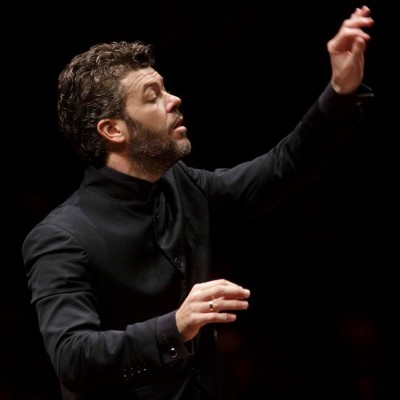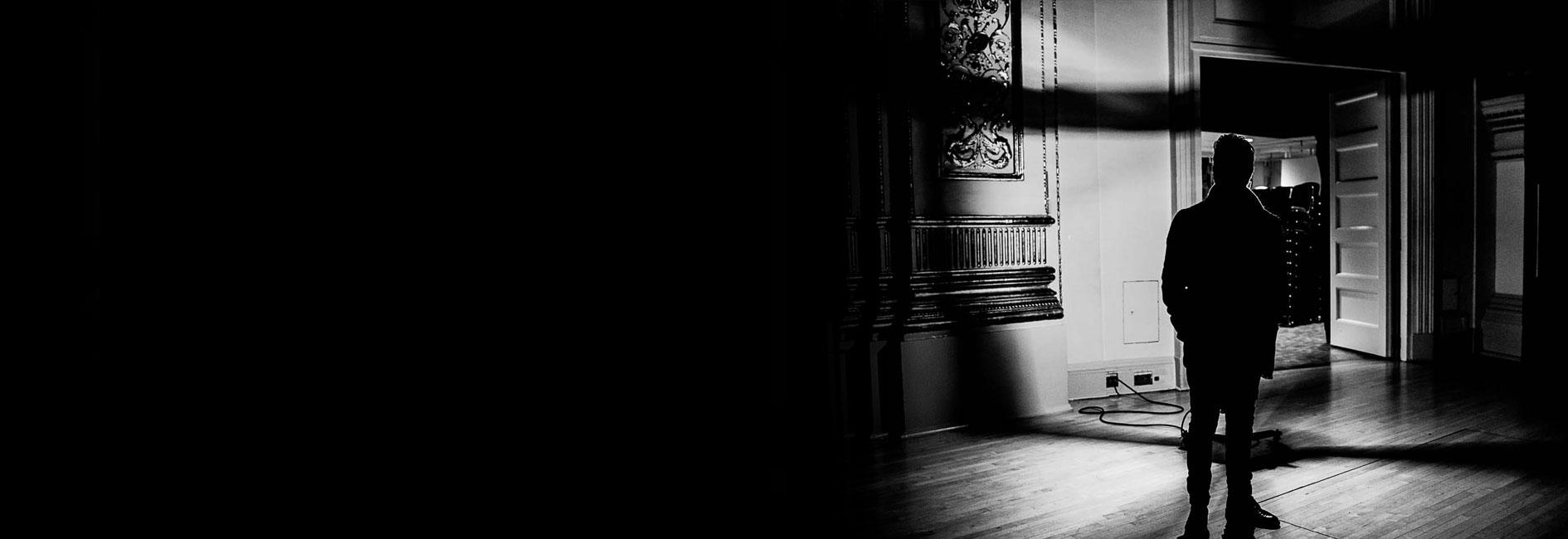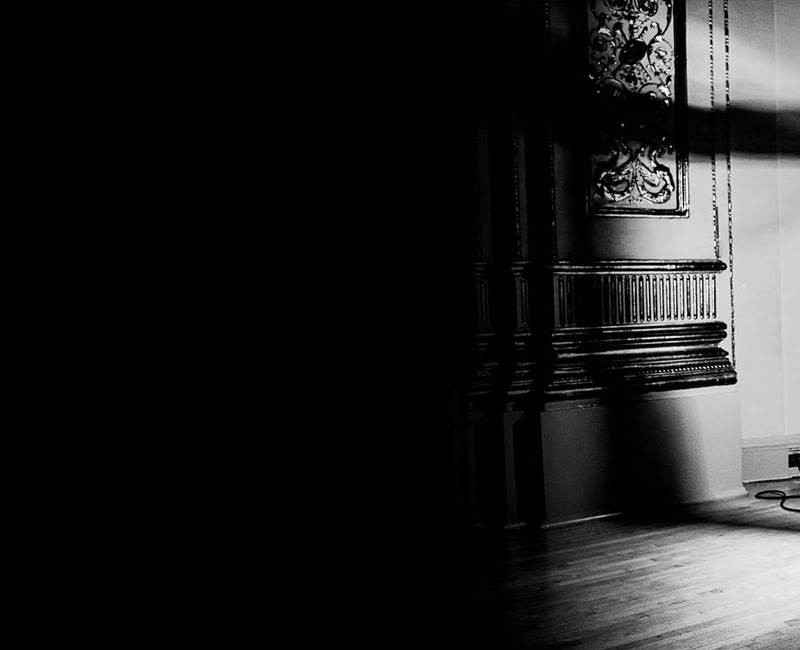
Pablo Heras-Casado, Alisa Weilerstein, and the San Francisco Symphony are «perfect musical partners» at Davies Hall
22 oct 2016
«In Davies Symphony Hall on Wednesday, in a superb collaboration with Heras-Casado, Weilerstein laid all those doubts to rest. This was a luminous account of a work that has the potential to be problematic, and Weilerstein didn’t so much finesse those issues as face them head-on in an explosive show of artistic strength.
In the first movement, with its broad, vaulting main theme, Weilerstein cast an expansive net. While heeding the composer’s warning not to take the music too fast, she and Heras-Casado brought a wonderful momentum to every paragraph — the effect was like some fairy-tale giant taking huge, picturesque strides across the countryside …
Heras-Casado, too, made a valiant accompanist, steadying her at every turn without taming her more extravagant impulses.
The rest of the program was just the latest reminder of what a vivid and resourceful conductor Heras-Casado is. (He currently leads the Orchestra of St. Luke’s in New York, but the first major American orchestra to snap him up as music director will have hit the jackpot.)
He began by leading the Symphony in a subtle but zesty account of Mozart’s Symphony No. 29 in A, one that emphasized the music’s easy symmetries while still giving it plenty of rhythmic intensity.
Even more impressive was the performance of Dvorák’s Symphony No. 7 that occupied the concert’s second half in a virtuoso display of orchestral color and architectural solidity. Throughout the early stages of the symphony, Heras-Casado kept ramping up the forcefulness of his rhetoric — slowly but ineluctably — until the entire stage seemed to quiver with possibility, and the finale brought everything to a glorious conclusion.
The orchestra members seemed to respond with enthusiasm to Heras-Casado’s ministrations. The brass sounded as voluble and polished as I’ve heard them, and the contributions of Edward Stephan, the Symphony’s excellent new timpanist, were a constant source of inspiration. This was exactly the kind of performance that makes a conductor sound like a wizard.»
«If there’s one sure thing on the Bay Area classical music scene these days, it has to be Pablo Heras-Casado’s annual visits to Davies Symphony Hall.
The Spanish conductor, who made his San Francisco Symphony debut in 2010, returned to Davies Hall on Wednesday night to lead the Symphony players in stylish, bravura performances of Schumann’s Cello Concerto in A minor, Dvorak’s Symphony No. 7 in D minor, and Mozart’s Symphony No. 29 in A major … Heras-Casado’s assured, electrifying leadership made each work resonate with fresh energy.
The results were especially brilliant in the first half’s performance of Schumann’s Cello Concerto. With Alisa Weilerstein as the impassioned soloist, the composer’s 1850 score, often dismissed as a work of Romantic excess, emerged sounding fierce, uncommonly intense and irresistibly gorgeous …
Weilerstein and Heras-Casado, whose recent recording of Shostakovich cello concertos has earned glowing reviews, were great partners in this score. Cellist and conductor were clearly in accord from the opening measures of the first movement, ushered in on woodwinds and pizzicato strings. Heras-Casado observed Schumann’s tempo marking – “Nicht zu schnell” (Not too fast) – but Weilerstein’s richly colored sound and unerring interpretive skills conferred an apt sense of turbulence on the proceedings. With Heras-Casado applying painterly dabs of orchestral color, the billowing strings, piquant woodwinds and shapely horns all made expressive contributions.
The concerto’s linked movements unfold without interruption. Weilerstein’s playing bloomed with warmth and feeling in the central slow movement, yielding a tender duet with the Symphony’s principal cellist, Michael Grebanier. The finale bristled with energy; with Weilerstein sounding assured and vivacious in Schumann’s challenging time shifts, Heras-Casado brought the performance to a dazzling close.
The rest of the program was just as impressive. After intermission, the Dvorak symphony received a dynamic reading. Heras-Casado, named Musical America’s 2014 Conductor of the Year, led the ensemble with a combination of precision and ebullience that made everything in the score sound spontaneous. Each section made heroic contributions; the woodwinds, voicing with sylvan beauty in the Adagio, were the standouts.
The Symphony hadn’t played Mozart’s Symphony No. 29 since 2004, and it got Wednesday’s program off to a terrific start. From the exuberant first movement to the zesty finale, Heras-Casado enforced a firm rhythmic profile, drawing transparent textures and a brilliant range of dynamics from the score. The second movement Andante, with its lovely theme for oboes, was notable for its quiet serenity; best of all was the witty third movement Menuetto. No mushy Mozart for this conductor; everything in his performance was characteristically crisp and clear.»
«Schumann’s Cello Concerto in A minor is like a thoughtful discourse which emerged from a period in his life after he moved with his family from Dresden to Dusseldorf. There was a lot of unhappiness around this time with domestic disturbances and unease from the move and one can hear these reflected in the music. From the outset, the San Francisco Symphony, led by Pablo Heras-Casado, set the tone – sombre and brooding …
The other offerings of the night were equally well executed, starting with Mozart’s Symphony no. 29 in A major. The difficulty in performing Mozart is often in finding the right balance between technical mastery, the right kind of articulations and just the right dose of expressiveness. Tricky, but this poses no problem for the orchestra which tuned into Mozartian character right from the outset, with accents and articulation superbly executed. It was also pleasant to be able to hear the all the layers of harmony being played without obscuring the melodies, and especially to be able to hear the bass notes of the cellos grounding the rest of the orchestra. The second movement was elegant, as though the players were singing the melodies through their instruments, flowing just beautifully. The symphony closed with a spirited fourth movement with impressive rapid notes from the strings, and a unified gusto which truly whetted our appetites for the rest of the evening.
The final offering was Dvořák’s Symphony no. 7 in D minor. Sometimes, after listening to the canon of classical music from Austro-German composers, one can quite easily predict where or when a phrase would end or where a melody would go. This makes it so refreshing to hear a Czech composer’s voice in the way that he injects Bohemian influences into his music. In his Seventh, it is as though Dvořák has a lot to say with ample material being developed in each of the movements. The SFS certainly did it justice. Brass textures and flute trills coloured the opening movement, as if painting a landscape, dramatic brooding giving way to pastoral joviality. In contrast, the second movement had an intimate feel, the woodwinds opening with a quiet melody against string pizzicatos. The scherzo’s catchy cross-rhythms instantly grabbed us, while the finale had moments where it could squarely be classified as head-banging, confirmed by the discreet nodding by concert-goers. The final D major close was solemn and weighty and appropriately greeted by the audience to conclude a memorable evening.»

